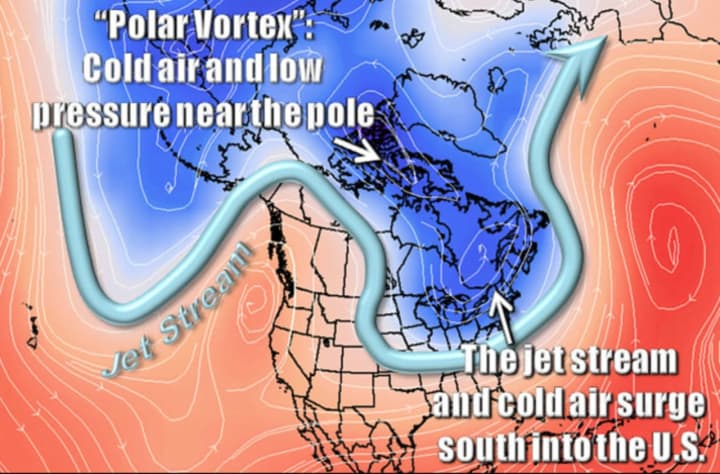The polar vortex is a large pocket of frigid air that hovers above the polar regions, and is most prominent in the winter months.
Researchers found that a loss of sea ice in the Arctic regions due to rising temperatures in the Barents-Kara seas, along with an increase in snow cover over Europe and Asia has caused the polar vortex to weaken. The pocket of cold air has in turn shifted toward Eurasia.
This movement could lead to colder and possibly extended winter seasons for portions of North America and Eurasia, according to the study.
"With warming and ridging in the Kara Sea, this typically allows for less ice cover but also is a conducive atmospheric pattern for lower temperatures in the North American mid-latitudes," AccuWeather Meteorologist Edward Vallee said.
The polar vortex in winter can extend well into the atmosphere and at times be more than 100,000 feet deep, AccuWeather Senior Meteorologist Bob Smerbeck said.
According to Smerbeck, the southern shift could bring the other end of the polar vortex toward eastern North America, yielding colder winters for the region.
"There are other factors that determine where the vortex sets up," Smerbeck said. "The warm blob over the north Pacific in winter 2013-2014 and the unusually warm waters along the west coast of North America (for the) 2014-2015 winter contributed to a southward dip in the vortex across eastern North America and cold winters in the central and eastern U.S."
Smerbeck said there is a lot of research still being conducted, and that while some researchers may not find the latest study overly convincing, a mechanical connection between the lack of sea ice and the vortex shift as opposed to just a statistical connection should allow for more accurate modeling.
A stronger polar vortex will hold the cold air northward. When it weakens and shifts away from the pole either by squeezing, splitting or displacement, it will drag cold air with it, Smerbeck added.
Check back to Daily Voice for updates.
Click here to follow Daily Voice Peekskill and receive free news updates.


